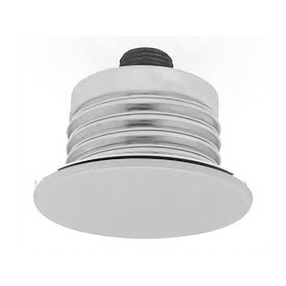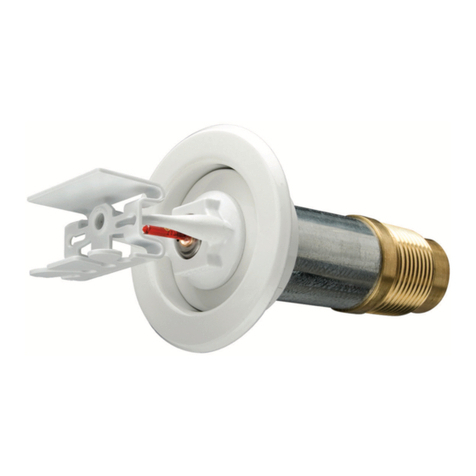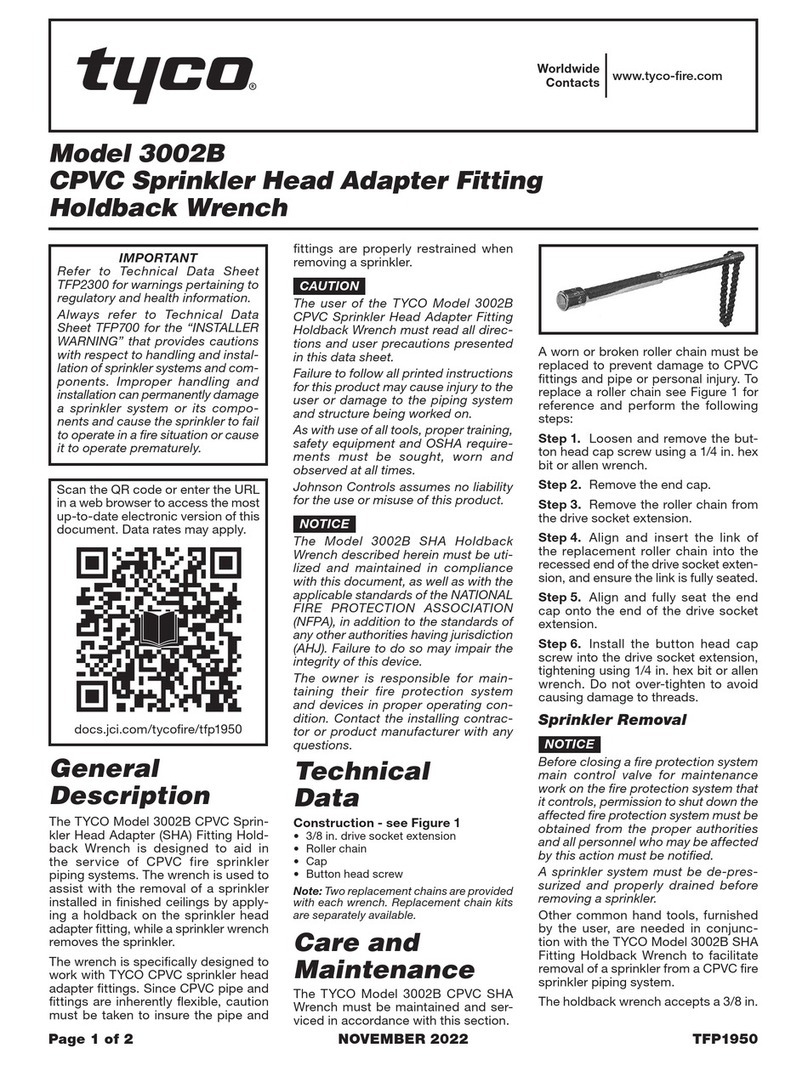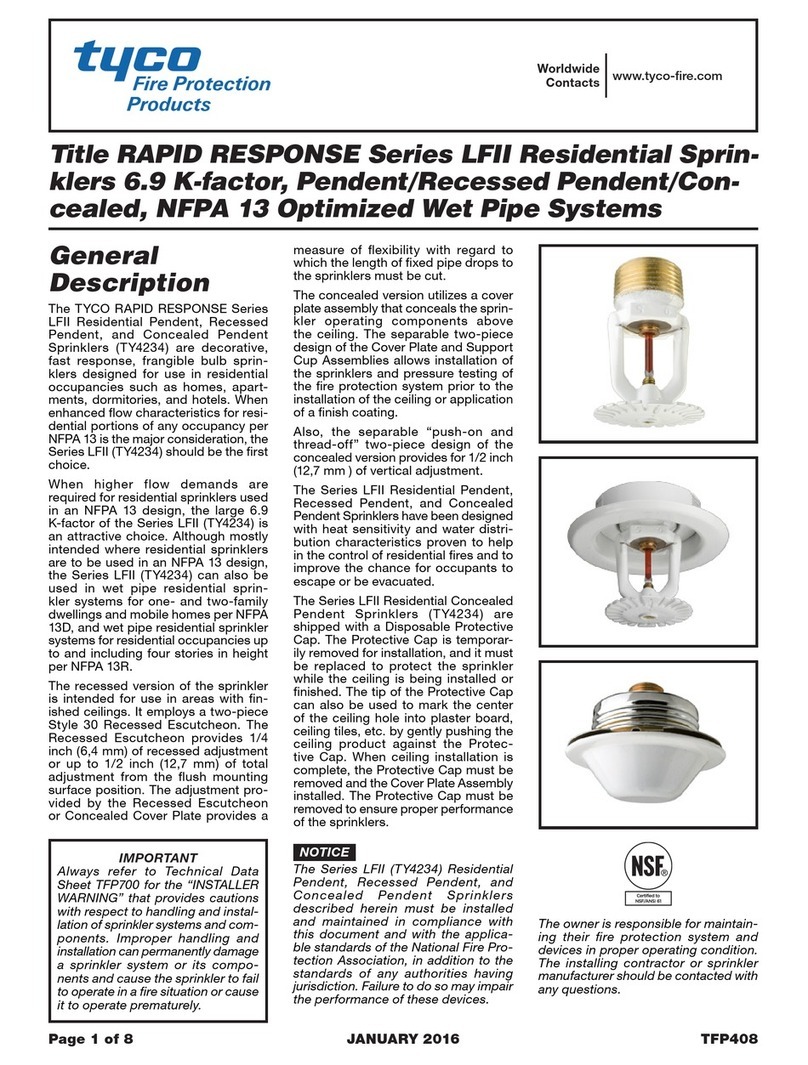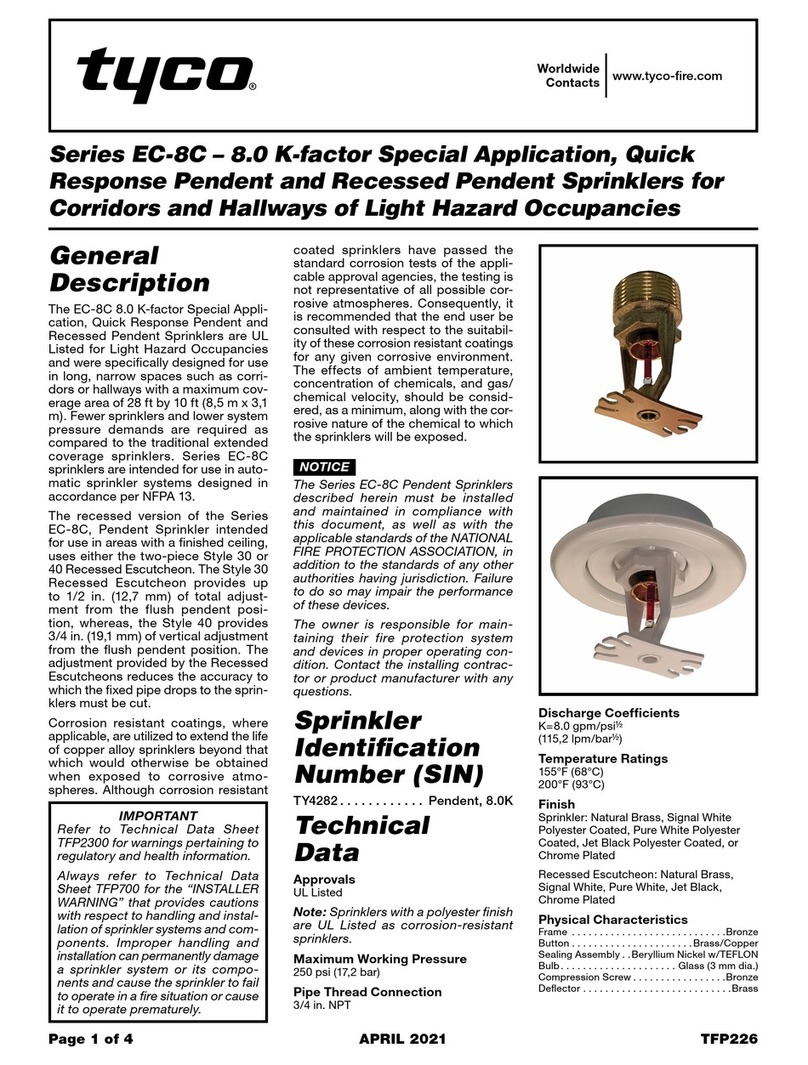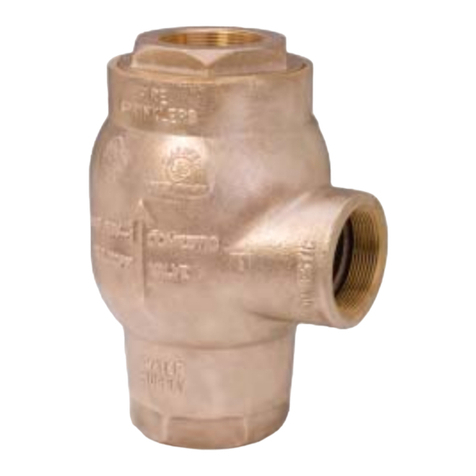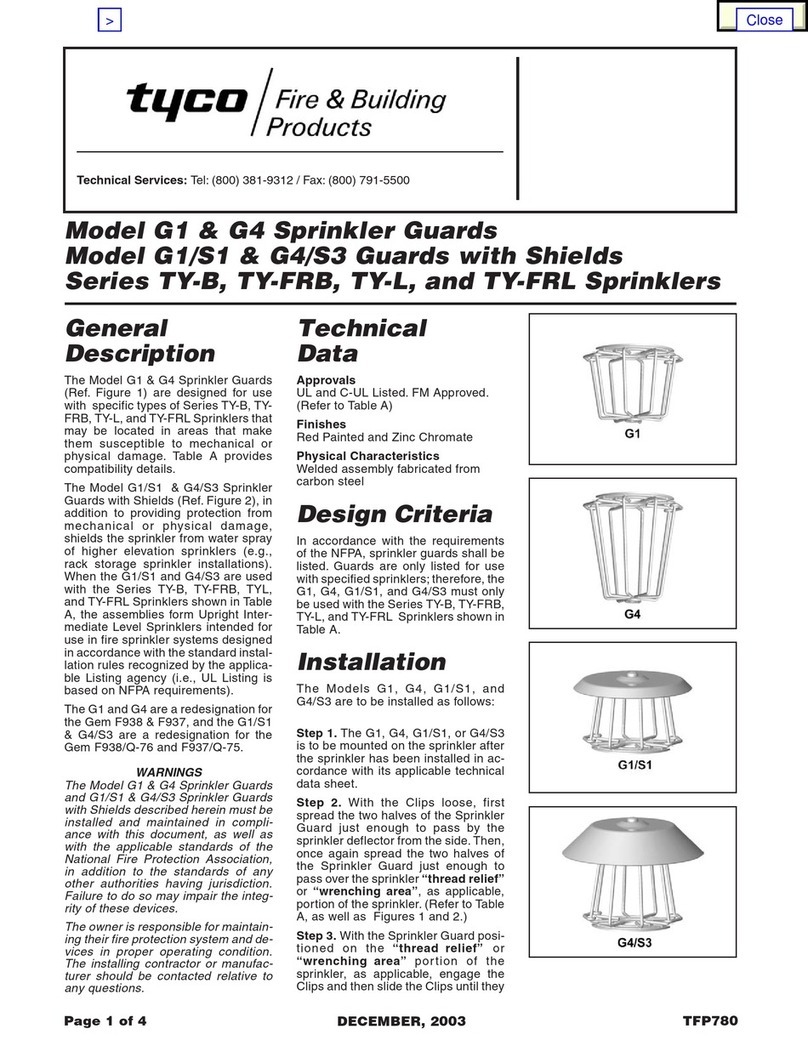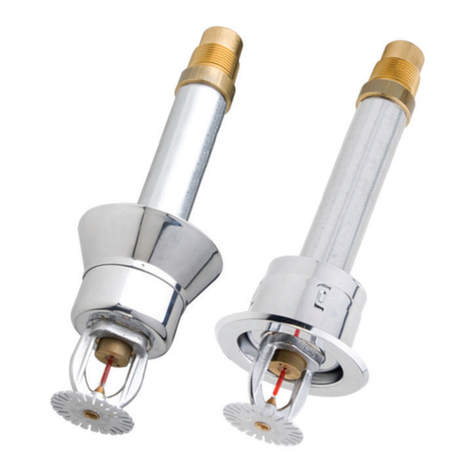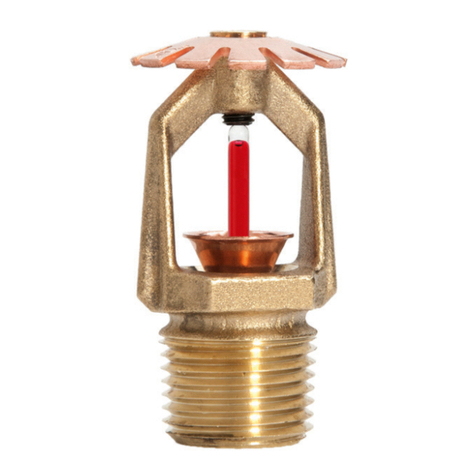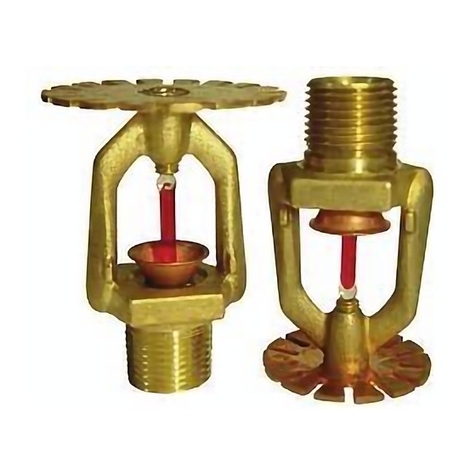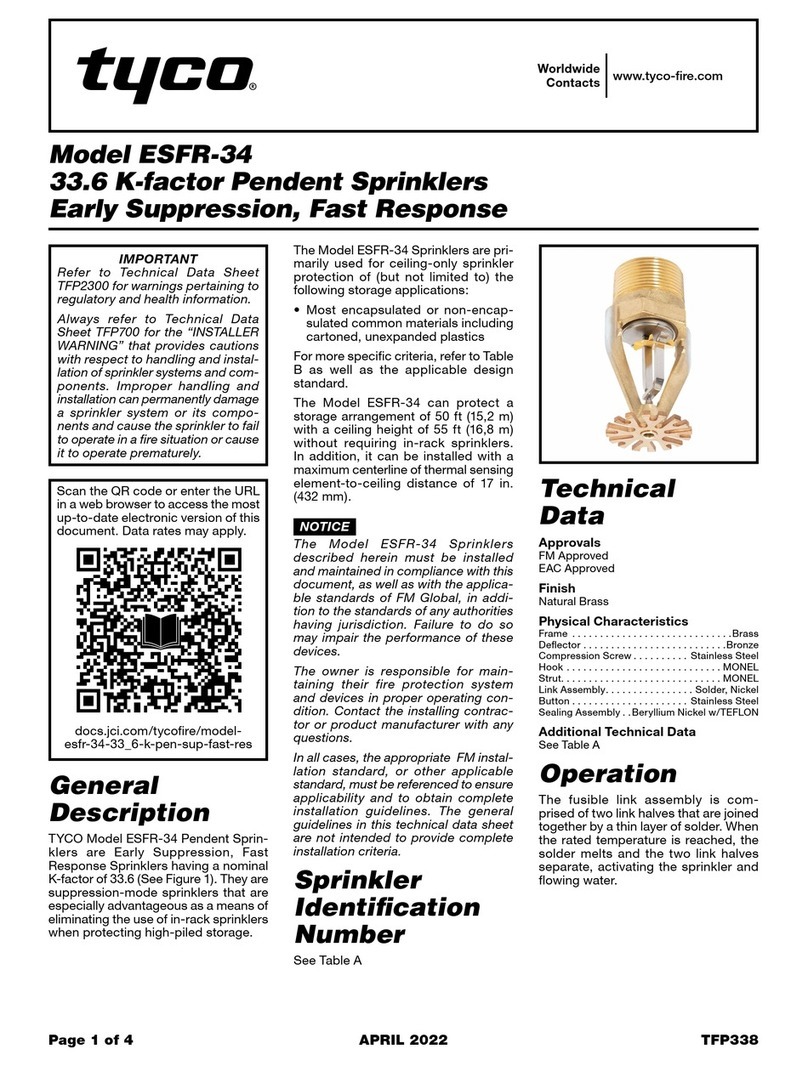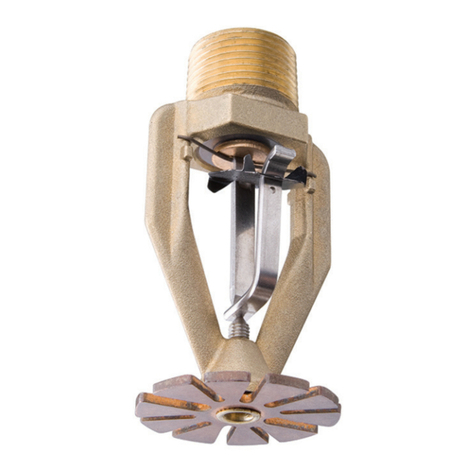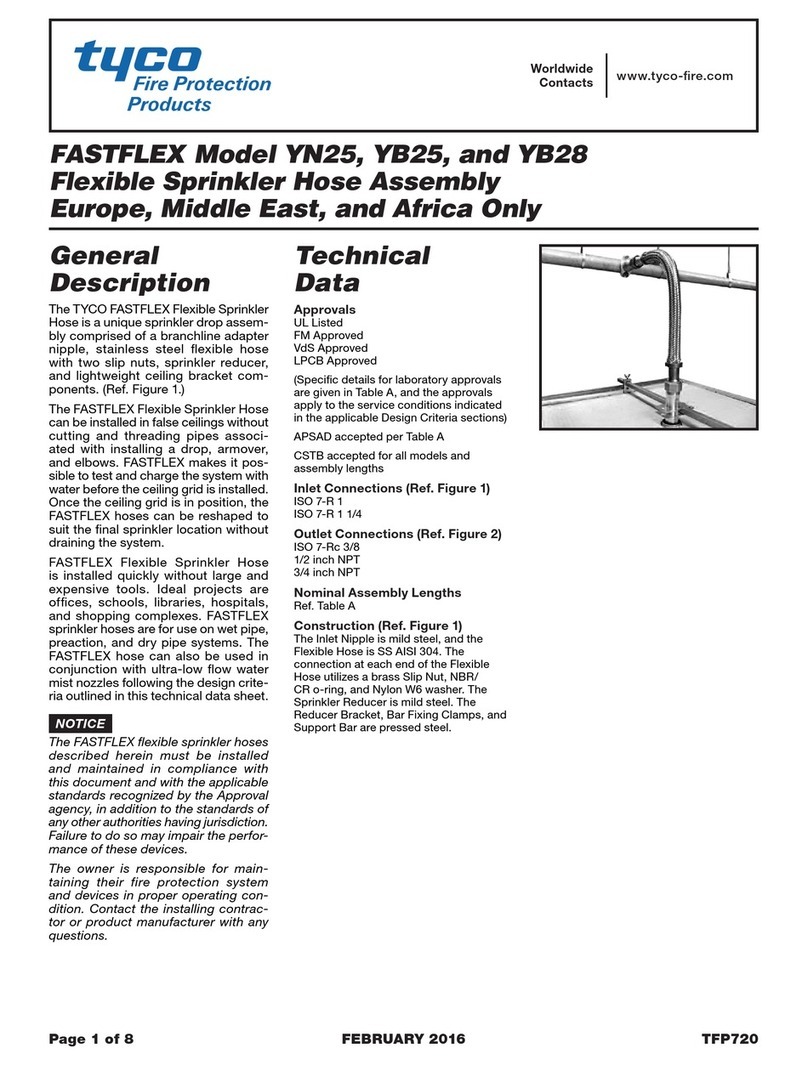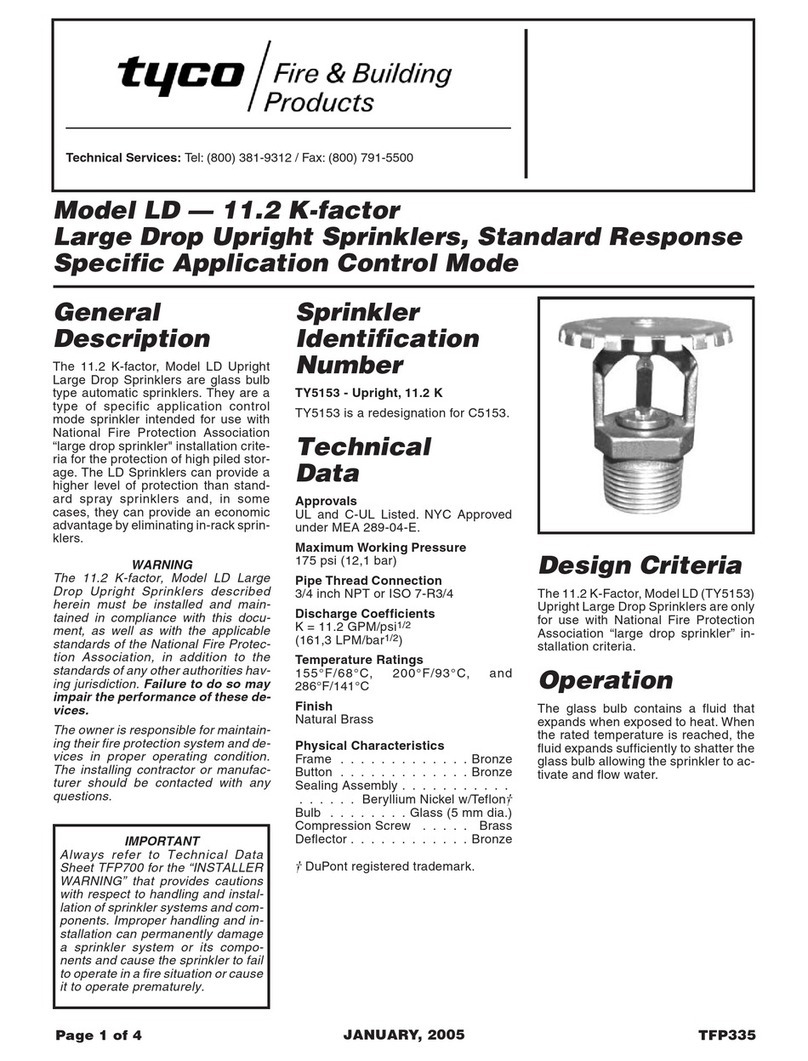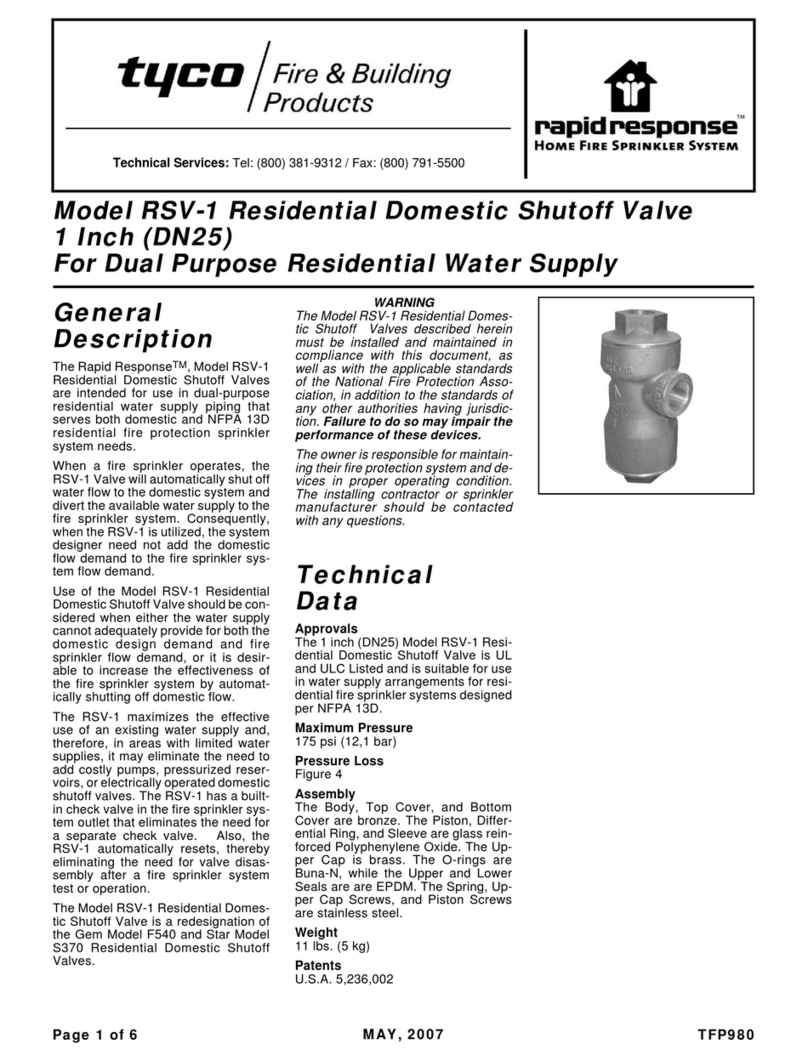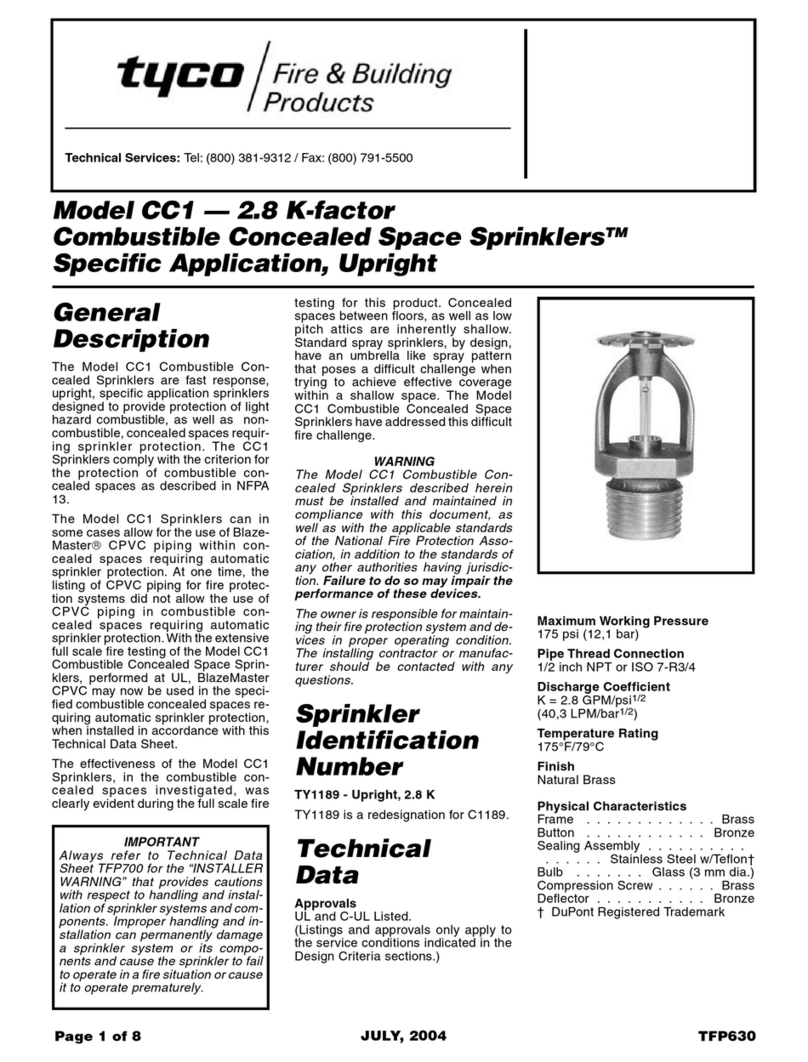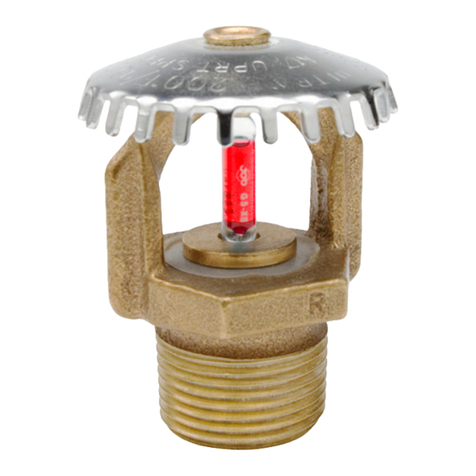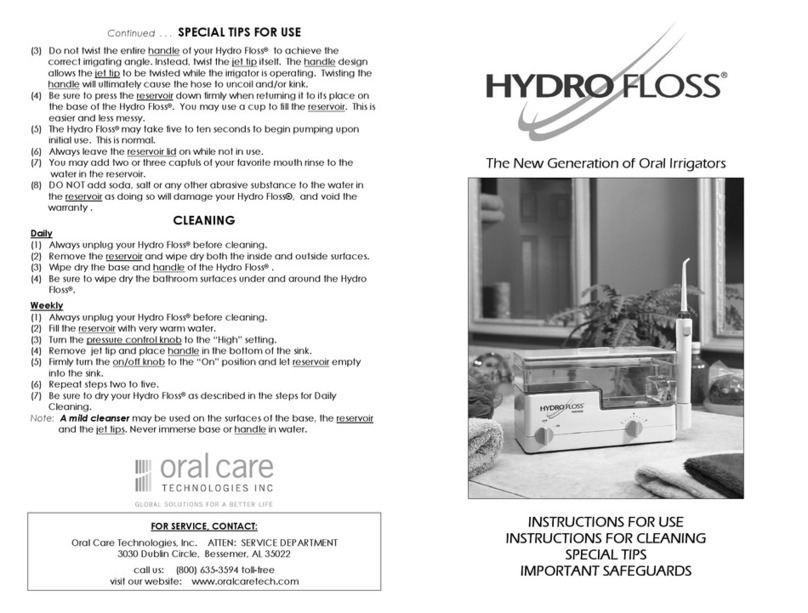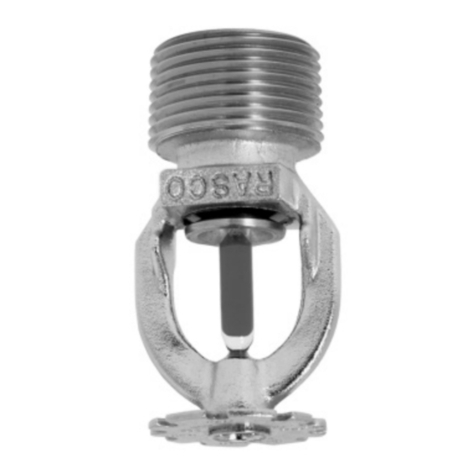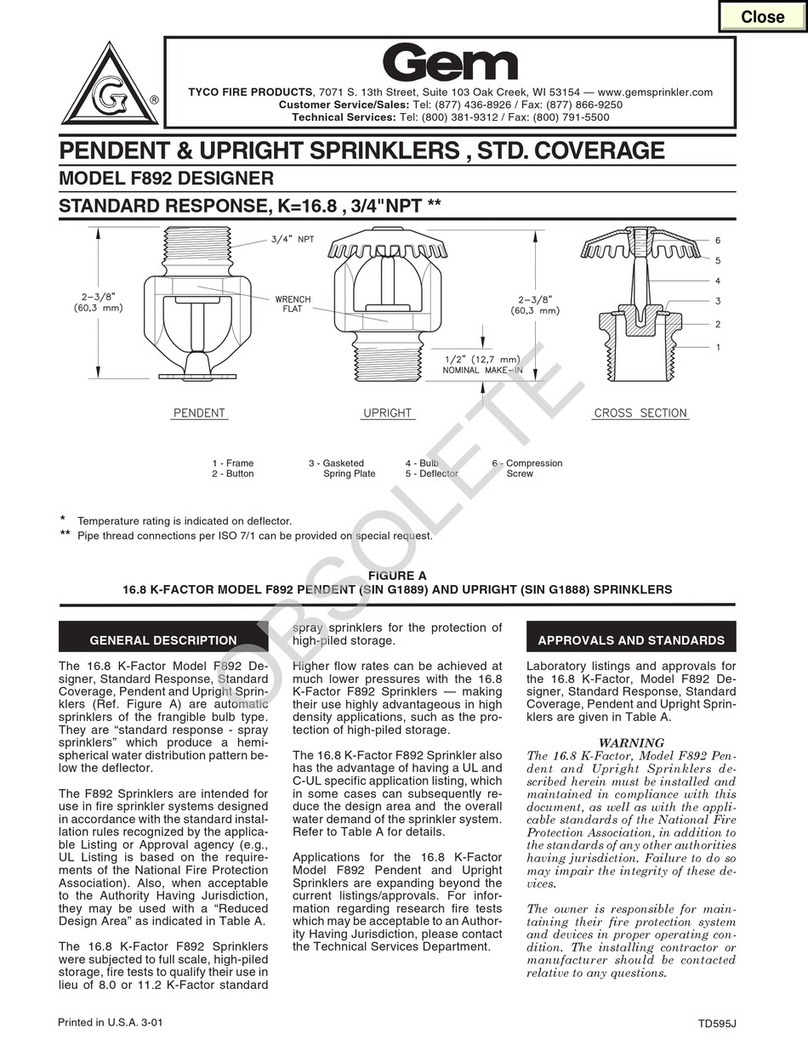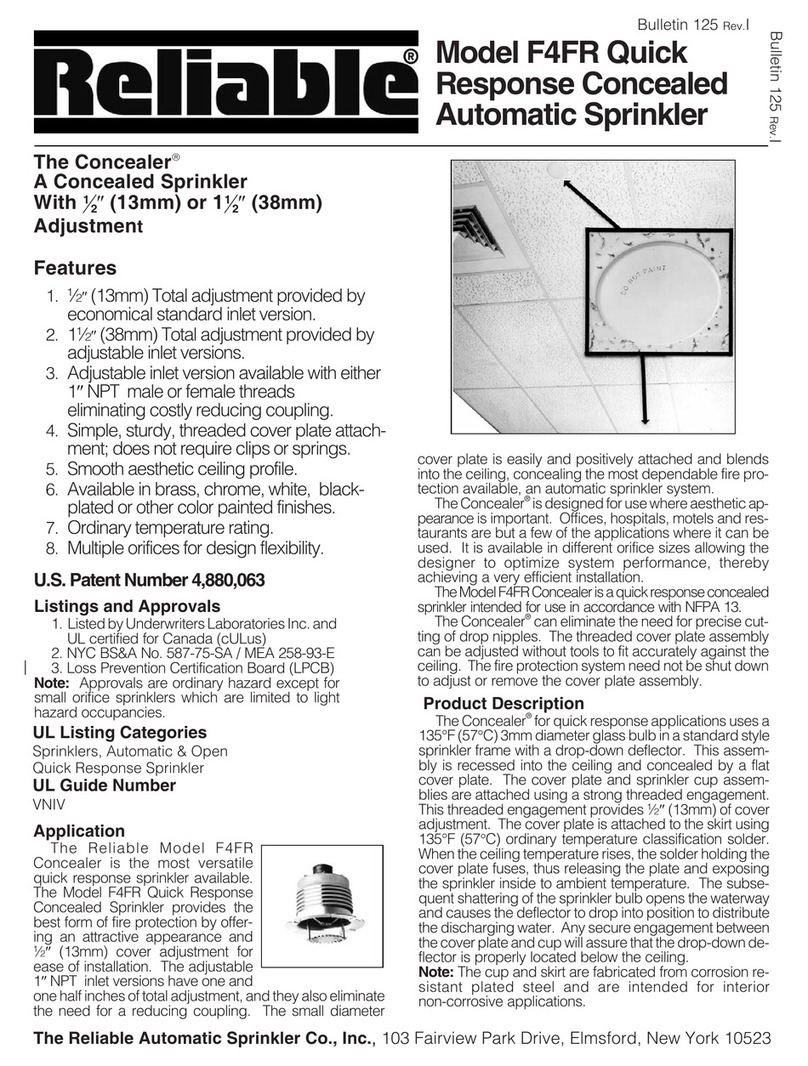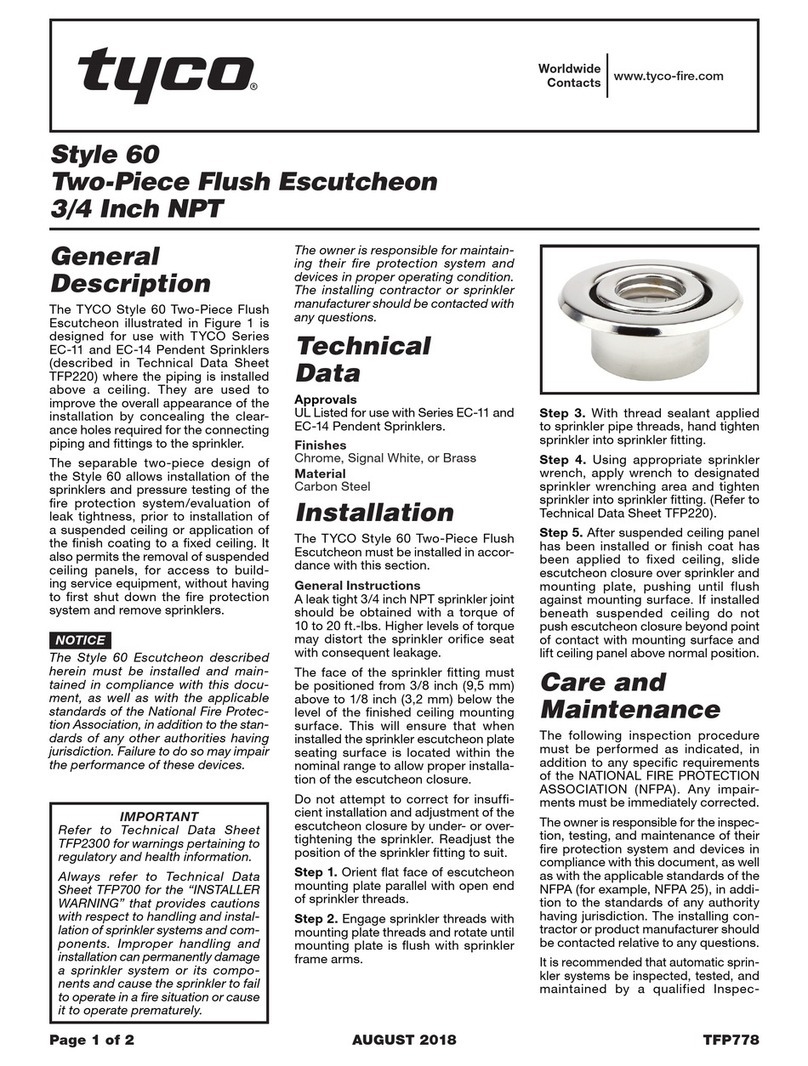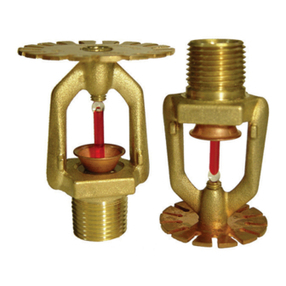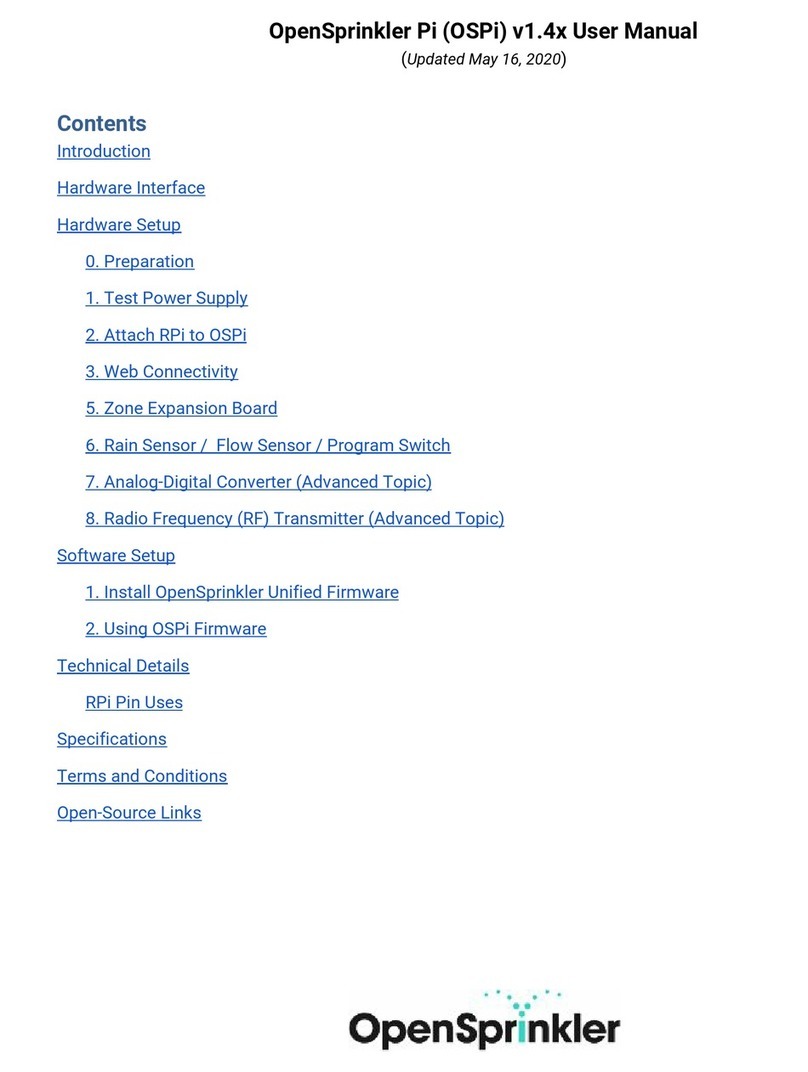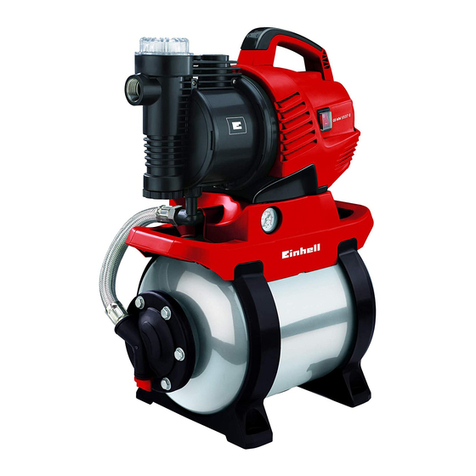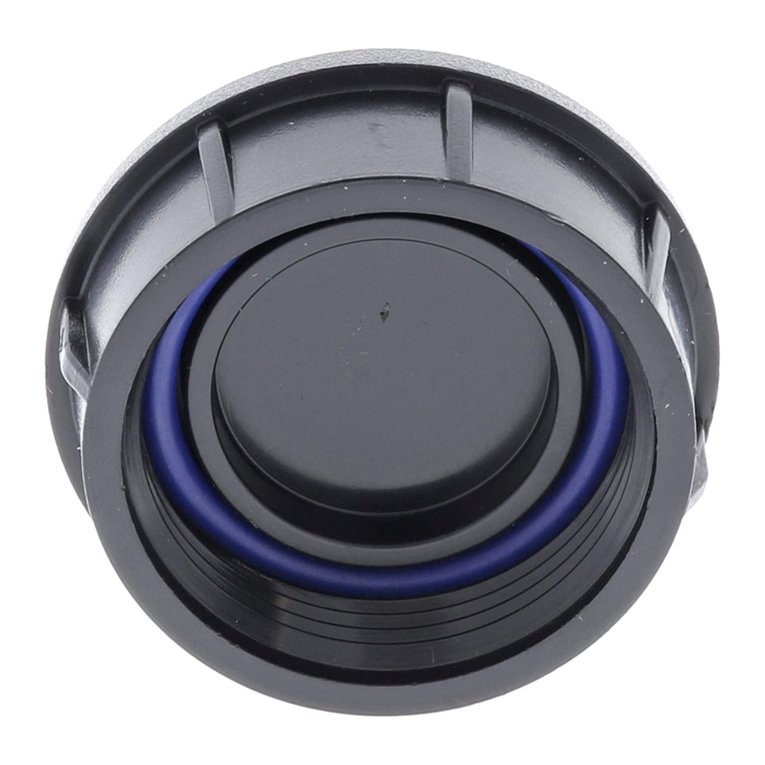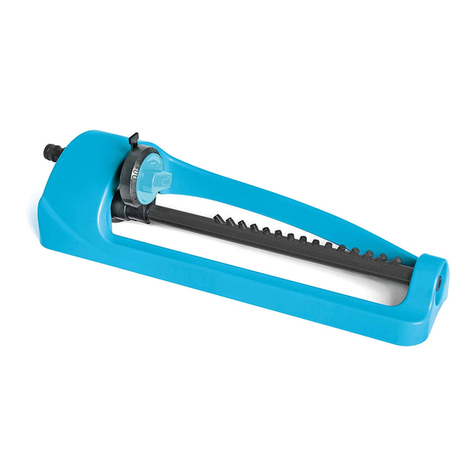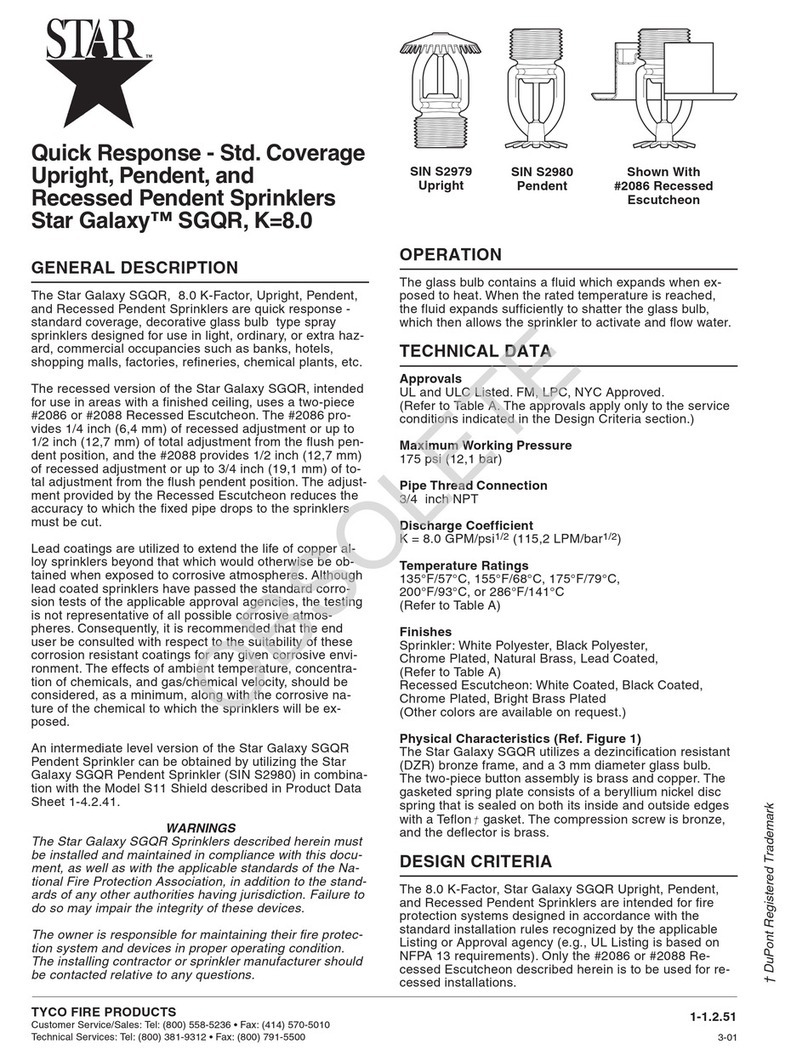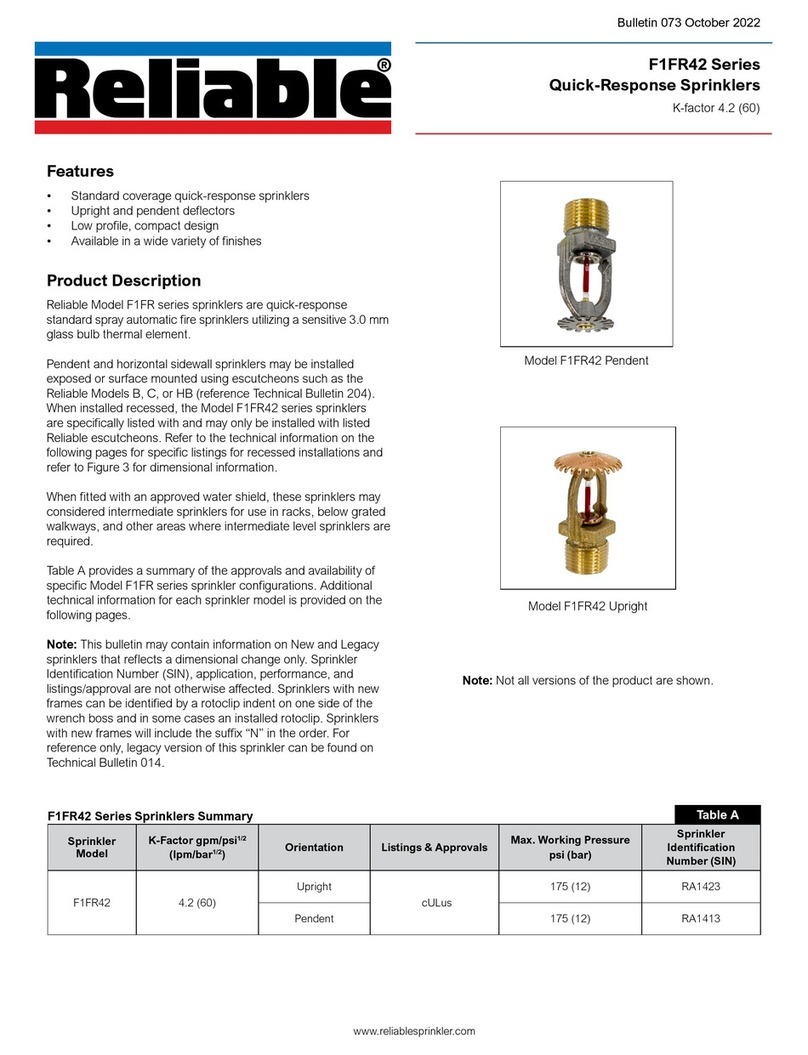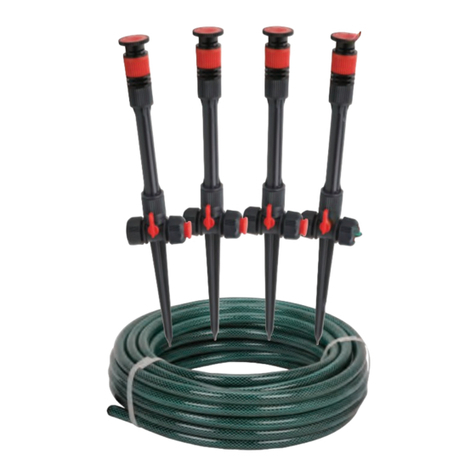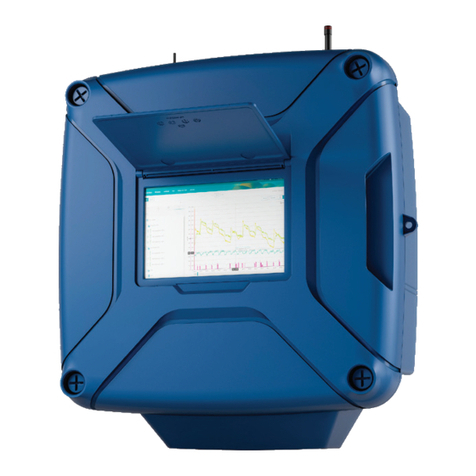
TFP400
Page 3 of 6
Operation
The glass bulb contains a uid that
expands when exposed to heat. When
the rated temperature is reached, the
uid expands sufciently to shatter the
glass bulb, allowing the sprinkler to
activate and ow water.
Design
Criteria
The TYCO RAPID RESPONSE
Series LFII Residential Pendent
and Recessed Pendent Sprinklers
(TY2234) are UL and C-UL Listed for
installation in accordance with this
section.
Residential Sprinkler Design Guide
When conditions exist that are
outside the scope of the provided
criteria, refer to the Residential
Sprinkler Design Guide TFP490 for
the manufacturer’s recommendations
that may be acceptable to the local
authority having jurisdiction.
System Types
Per the UL Listing, wet pipe and dry
pipe systems may be utilized. Per the
C-UL Listing, only wet pipe systems
may be utilized.
Refer to Technical Data Sheet TFP485
for the use of residential sprinklers in
residential dry pipe systems.
Ceiling Types
Smooth at horizontal, or beamed, or
sloped, in accordance with the 2013
Edition of NFPA 13D, 13R, or 13 as
applicable.
Hydraulic Design
(NFPA 13D and 13R)
For systems designed to NFPA
13D or NFPA 13R, the minimum
required sprinkler ow rates are
given in Tables A and B as a func-
tion of temperature rating and the
maximum allowable coverage areas.
The sprinkler ow rate is the minimum
required discharge from each of the
total number of “design sprinklers” as
specied in NFPA 13D or NFPA 13R.
The number of “design sprinklers”
specied in NFPA 13D and 13R for wet
pipe systems is to be applied when
designing dry pipe systems.
Hydraulic Design
(NFPA 13)
For systems designed to NFPA 13,
the number of design sprinklers is
to be the four most hydraulically
demanding sprinklers. The minimum
required discharge from each of the
four sprinklers is to be the greater of
the following:
•
The ow rates given in Tables A
or B as a function of temperature
rating and the maximum allowable
coverage area.
•
A minimum discharge of 0.1 gpm/ft
2
over the “design area” comprised
of the four most hydraulically
demanding sprinklers for actual
coverage areas protected by the
four sprinklers.
The number of “design sprinklers”
specied in NFPA 13 for wet pipe
systems is to be applied when
designing dry pipe systems.
Dry Pipe System Water Delivery
When using the Series LFII Residential
Sprinklers (TY2234) in dry pipe sprin-
kler systems, the time for water
delivery must not exceed 15 seconds
for the most remote operating
sprinkler.
Obstruction to Water Distribution
Sprinklers are to be located in accor-
dance with the obstruction rules
of NFPA 13D, 13R, and 13 as appli-
cable for residential sprinklers as
well as with the obstruction criteria
described within the Technical Data
Sheet TFP490.
Operational Sensitivity
Sprinklers are to be installed with a
deector-to-ceiling distance of 1-1/4 to
4 inches.
Sprinkler Spacing
The minimum spacing between sprin-
klers is 8 feet (2,4 m). The maximum
spacing between sprinklers cannot
exceed the length of the coverage
area (Table A or B) being hydraulically
calculated (e.g., maximum 12 feet for a
12 ft. x 12 ft. coverage area, or 20 feet
for a 20 ft. x 20 ft. coverage area).
Installation
The TYCO RAPID RESPONSE
Series LFII Residential Pendent
and Recessed Pendent Sprinklers
(TY2234) must be installed in accor-
dance with this section:
General Instructions
Do not install any bulb type sprin-
kler if the bulb is cracked or there is a
loss of liquid from the bulb. With the
sprinkler held horizontally, a small air
bubble should be present. The diam-
eter of the air bubble is approximately
1/16 inch (1,6 mm).
A leak-tight 1/2 inch NPT sprinkler
joint should be obtained by applying
a minimum-to-maximum torque of 7
to 14 ft.-lbs. (9,5 to 19,0 Nm). Higher
levels of torque can distort the sprin-
kler Inlet with consequent leakage or
impairment of the sprinkler.
Do not attempt to compensate
for insufcient adjustment in an
Escutcheon Plate by under- or over-
tightening the sprinkler. Re-adjust the
position of the sprinkler tting to suit.
Series LFII Residential Pendent
Sprinklers
The Series LFII Residential Pendent
Sprinklers must be installed in accor-
dance with the following instructions.
Step 1. Install pendent sprinklers in
the pendent position with the deector
parallel to the ceiling.
Step 2. With pipe thread sealant
applied to the pipe threads, hand-
tighten the sprinkler into the sprinkler
tting.
Step 3. Tighten the sprinkler into
the sprinkler tting using only the
W-Type 6 Sprinkler Wrench (Figure
3). With reference to Figure 1, apply
the W-Type 6 Sprinkler Wrench to the
wrench ats.
Series LFII Residential Recessed
Pendent Sprinklers
The Series LFII Residential Recessed
Pendent Sprinklers must be installed
in accordance with the following
instructions.
Step A. Install recessed pendent
sprinklers in the pendent position with
the deector parallel to the ceiling.
Step B. After installing the Style 20
Mounting Plate over the sprinkler
threads and with pipe thread sealant
applied to the pipe threads, hand-
tighten the sprinkler into the sprinkler
tting.
(Continued on Page 5)
